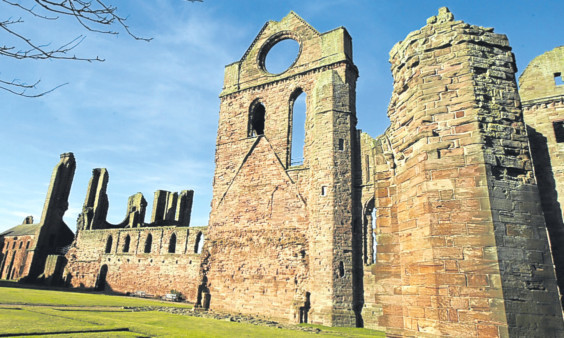An Angus landmark may have to compete with wind power for prominence on the Angus skyline, it has been claimed.
A report by Angus Council’s countryside officer Stewart Roberts has claimed a proposed wind turbine would adversely affect the setting of Arbroath and historic landmarks such as its abbey.
The damning report also states that the single turbine at Bairds Malt on Elliot Industrial Estate would “dominate houses and have an overbearing effect.”
He also warned of the potential for creating a “landscape with wind turbines” with a number of operational or approved turbines to the west and north west.
Bairds Malt and their construction partner Kilmac submitted an application to Angus Council in December 2014 to develop a medium-sized turbine at their plant on the Elliot Industrial Estate.
The proposed single turbine would be situated on the south-west corner of their site, with a height of 55 metres to its hub and 77 metres to tip, and would be partially screened by buildings.
Mr Roberts stated: “Arbroath Abbey is an important part of the Arbroath skyline.
“It is not much taller than other buildings in Arbroath and is therefore vulnerable to being out-competed by taller structures.
“Similar issues apply to the Keptie Pond Water Tower.
“The size and prominent location of the proposed turbine on the edge of Arbroath would adversely affect the setting of Arbroath and historic landmarks within it.”
The report said the size of the turbine, together with the prominent location would “inevitably lead to significant visual effects.”
“Given the size and proximity of the turbine, it is likely that the turbine would dominate houses and have an overbearing effect,” it stated.
Richard Broadbent, production and technical director of Bairds Malt, said they were “disappointed” by the council report.
He said: “We feel the landscape officer’s response takes no recognition of the existing industrial context of the site and the fact that the turbine will be partially screened by the existing buildings.
“The planning recommendation for our proposal will however be shaped by an assessment of the views of all consultees rather than on the opinion of any single consultee.
“We remain committed to the development and believe that it will create significant social and economic benefits for the local area.
A spokeswoman for Historic Scotland said: “Whilst we had some concerns, they were not enough to warrant an objection to the application.”
